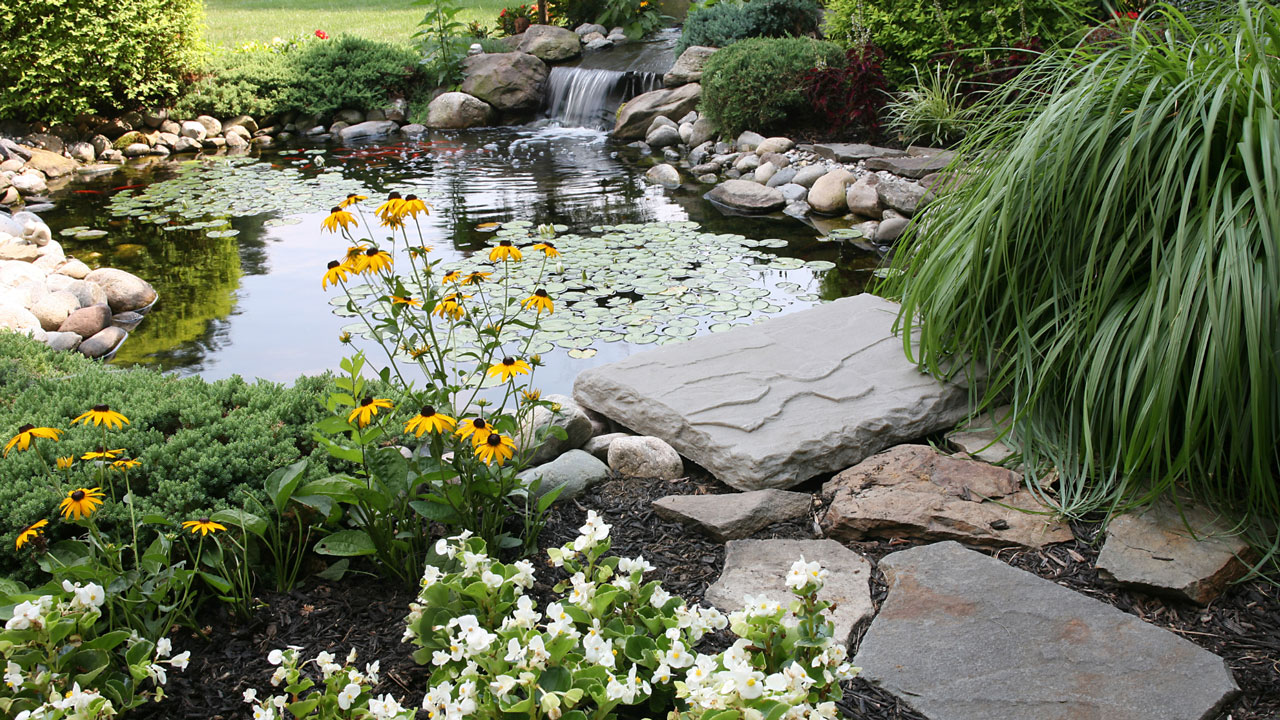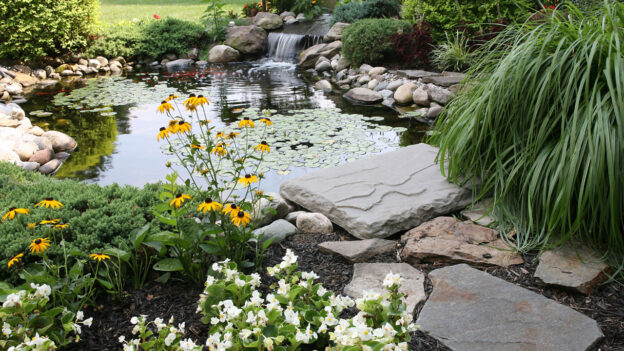 Water plants play a crucial role in enhancing the beauty, ecological balance, and overall appeal of backyard ponds. From providing habitat for wildlife to adding visual interest and improving water quality, incorporating aquatic plants can take your backyard pond to the next level. In this comprehensive guide, we’ll explore the benefits of water plants and provide tips on how to incorporate them effectively into your backyard pond design.
Water plants play a crucial role in enhancing the beauty, ecological balance, and overall appeal of backyard ponds. From providing habitat for wildlife to adding visual interest and improving water quality, incorporating aquatic plants can take your backyard pond to the next level. In this comprehensive guide, we’ll explore the benefits of water plants and provide tips on how to incorporate them effectively into your backyard pond design.
Benefits of Water Plants to Your Backyard Pond
By selecting a diverse range of plant species, carefully planning their placement, and providing proper maintenance and care, you can create a thriving aquatic ecosystem that attracts wildlife, improves water quality, and provides endless opportunities for enjoyment and relaxation.
Enhance Aesthetic Appeal
Water plants add texture, color, and visual interest to your pond, creating a vibrant and dynamic water garden. Whether you prefer the delicate blooms of water lilies, the lush foliage of floating plants, or the vertical accents of marginal plants, there are endless options to suit your design preferences.
Improve Water Quality
Aquatic plants play a vital role in maintaining water quality by absorbing excess nutrients, oxygenating the water, and reducing algae growth. They act as natural filters, helping to clarify the water and create a healthier environment for fish and other aquatic life.
Provide Habitat for Wildlife
Water plants provide shelter, nesting sites, and food sources for a variety of wildlife, including fish, frogs, birds, and beneficial insects. By incorporating a diverse range of plant species, you can create a biodiverse ecosystem that attracts and supports local wildlife.
Control Algae Growth
Certain water plants with minimal maintenance, such as submerged and floating plants, compete with algae for nutrients and sunlight, helping to prevent excessive algae growth and maintain water clarity. By shading the water’s surface and absorbing nutrients, these plants can effectively reduce algae blooms and create a more balanced ecosystem.
Enhance Oxygenation
Through photosynthesis, aquatic plants release oxygen into the water, helping to oxygenate the pond and support aerobic bacteria and fish. This natural process improves water quality and reduces the risk of oxygen depletion, especially in warmer weather or larger ponds.
Common Types of Water Plants
- Floating Plants: Floating plants, such as water lilies, water lettuce, and water hyacinth, float on the surface of the water and provide shade, habitat, and nutrient absorption. They are excellent choices for adding beauty and natural filtration to your pond.
- Submerged Plants: Submerged plants, also known as oxygenators, grow entirely beneath the water’s surface and help to oxygenate the water, absorb nutrients, and provide habitat for aquatic creatures. Examples include hornwort, anacharis, and waterweed.
- Marginal Plants: Marginal plants grow along the edges of the pond or in shallow water and add vertical interest, texture, and habitat diversity. Common examples include cattails, iris, rushes, and bog plants such as pitcher plants and papyrus.
- Emergent Plants: Emergent plants have roots submerged in water but grow above the water’s surface, creating a transition zone between the pond and the surrounding landscape. They provide habitat, erosion control, and aesthetic appeal. Examples include water lilies, lotus, and pickerelweed.
Tips For Incorporating Water Plants into Your Pond Design
Assess Your Pond’s Conditions
Before selecting aquatic plants, assess your pond’s size, depth, sunlight exposure, and water quality to determine which plants will thrive in your specific environment.
Choose a Variety of Plant Species
To create a balanced and biodiverse ecosystem, incorporate a variety of plant species, including floating, submerged, marginal, and emergent plants. Choose plants that complement each other in terms of size, growth habit, and water depth requirements.
Planting Techniques
When planting water plants, use appropriate planting containers or baskets filled with aquatic planting media to provide stability and nutrients. Position plants at the appropriate depth based on their specific requirements, and use gravel or stones to anchor them in place.
Maintenance and Care
Regular maintenance is essential to ensure the health and vitality of water plants. Remove dead or decaying foliage, thin out overcrowded plants, and fertilize as needed to promote healthy growth. Monitor water quality and make adjustments as necessary to support plant growth and overall pond health.
Seasonal Considerations
Be mindful of seasonal changes and adjust your plant care routine accordingly. In colder climates, winterizing your water plants is essential to ensure their survival during freezing temperatures. Consider moving sensitive plants indoors or to a protected area, and install a pond heater or aerator to prevent ice formation and maintain oxygen levels. In warmer climates, monitor water levels and provide shade to prevent overheating and sunburn on delicate plant foliage.
Managing Growth
Some water plants, such as water lilies and cattails, can spread rapidly under favorable conditions, leading to overcrowding and competition for resources. Regularly thin out overgrown plants, divide clumps and remove excess foliage to maintain a balanced and harmonious pond ecosystem. Consider using plant barriers or containers to contain aggressive species and prevent them from spreading uncontrollably.
Wildlife Interaction
As your pond matures and water plants establish themselves, you’ll likely attract a variety of wildlife, including birds, frogs, turtles, and beneficial insects. Encourage wildlife interaction by providing shelter, nesting sites, and food sources within your pond habitat. Avoid using chemical pesticides or herbicides that could harm wildlife or disrupt the natural balance of your pond ecosystem.
Whether you’re a seasoned pond enthusiast or a novice gardener, adding water plants to your pond is a simple yet impactful way to elevate its beauty and create a natural oasis in your backyard.
Transform Your Backyard Oasis with Professional Pond Design and Installation
If you’re looking to create a stunning backyard pond with expert guidance and precision, it’s time to entrust your project to the professionals. Our team of experienced pond designers and installers is here to bring your vision to life, from initial concept to final execution.
Contact us today to schedule a consultation and take the first step towards transforming your outdoor space into a tranquil oasis you’ll love for years to come. Let our expertise and dedication to excellence make your backyard pond dreams a reality!
